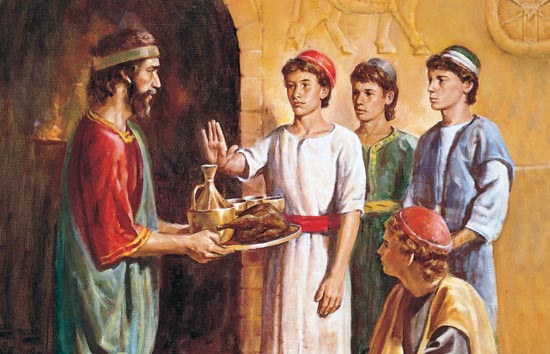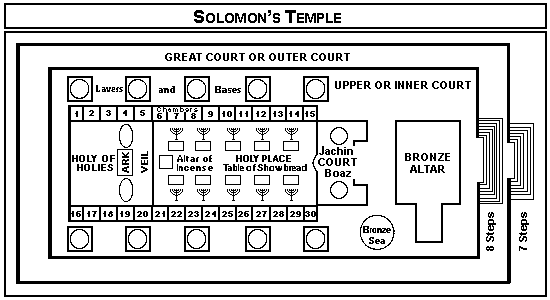The traditional view of the book of Ezra is that it was written by Ezra the scribe and completed around 400 BC. The Book of Ezra appears to be a continuation of 1 and 2 Chronicles, which leads some to posit that a single author composed both. In addition, many scholars agree that the author of Ezra is also the author of Nehemiah, so it is possible that a single author was responsible for all three books. There is more certainty, however, that Ezra and Nehemiah were composed by a single author.
The Book of Ezra is a history of the early days of the return of the Jewish people from their 70 years of captivity in Babylon. The book spans 538 BC to around 456 BC. Ezra 1-6 describes the return from Babylon under the leadership of Sheshbazzar and Zerubbabel, and the rebuilding of the Jerusalem temple. Ezra 7-10 is Ezra’s own account of his activities as priest and scribe to order the life of the returned Jewish community according to biblical standards.
The Medo-Persian King Cyrus conquers Babylon in 539 BC. The very next year Cyrus starts to overturn the policies of the Babylonians with regard to the exile communities living in their midst. In verses 1-4 of chapter one, Cyrus decrees that the Jews in Babylonian exile may return to their homeland in Judah and rebuild the temple. In addition, Cyrus would provide monetary assistance for the construction of the temple.
Why would Cyrus do this? The Chronological Study Bible explains:
Certainly Cyrus believed that his empire was built with the help of the god who ruled over the entire earth. In writing to various peoples, he called that deity by the name of the highest god of the people to whom he wrote. This might be a classic case of political propaganda, or Cyrus may have assumed that there was one god, who was called different names by different peoples. In either case, Cyrus both appealed to the gods to support his kingship and to the peoples of his new empire to accept him as rightful ruler.
John A. Martin, in The Bible Knowledge Commentary, adds that
Cyrus’ concern was to establish strong buffer states around his empire which would be loyal to him. Also by having his subject peoples resettled in their own countries he hoped to have the gods in various parts of his empire praying for him to his gods Bel and Nebo. The famous Cyrus Cylinder (538 B.C.), which records his capture of Babylon and his program of repatriating his subject peoples in their homelands, includes this statement: ‘May all the gods whom I have resettled in their sacred cities daily ask Bel and Nebo for a long life for me.’
Although Cyrus is the king who allows the Jews to return from exile, the author is careful to note that God is responsible for Cyrus’s decision. Both Jeremiah and Isaiah had prophesied that the Jews would be freed from Babylonian rule by Cyrus, with Jeremiah even predicting the date this would occur. God made sure these prophecies would come to pass. He is sovereign over all the affairs of the world.
Tens of thousands of Jews decide to take up Cyrus’s offer to return to Judah. Their Babylonian neighbors assist them with silver, gold, animals, and other goods that would help them get resettled in Judah (reminiscent of the Israelites leaving Egypt). Cyrus orders all of the treasures that were taken by Nebuchadnezzar from the temple to be returned to the Jews. The Jews begin their trek to their homeland under the command of Sheshbazzar.
As we move to verses 8-13 in chapter three, two new leaders have taken charge of the post-exilic community in Jerusalem: Zerubbabel and Jeshua. Zerubbabel has evidently succeeded Sheshbazzar as political leader of the community and Jeshua is acting as the religious leader, or high priest.
In the second year after their arrival, they begin to construct the foundations of the new temple. When the foundation is completed, there is a great celebration which is patterned after King David’s celebration of the Ark being brought to Jerusalem. After 70 years in exile, the people of Judah sing about God, “For he is good, for his steadfast love endures forever toward Israel.”
In the midst of shouting and praise, the older members of the community, who had seen Solomon’s temple before it was destroyed, are weeping because they realize that the new temple they are constructing is inferior to the grandeur of the original temple. The prophet Haggai, some years later, would reassure the people of Judah that the new temple would outshine the old.
“’The latter glory of this house shall be greater than the former, says the LORD of hosts. And in this place I will give peace, declares the LORD of hosts.’”
Why? Because the Son of God, the Messiah, Jesus Christ Himself would enter the new temple and bring it unparalleled glory because of His presence.
Even though construction of the new temple is started in 536 BC, the people of Judah would not finish until 515 BC, 21 years later. Why did it take so long? Ezra 4:1-5 provides one reason: the hostility of the people living around Jerusalem.
Who are these enemies and adversaries of post-exilic community? John Martin writes,
The enemies of Judah and Benjamin refer to the people living in Palestine since the time of the fall of the Northern Kingdom in 722 B.C. . . .
The ‘enemies’ (called ‘the peoples around them,’ Ezra 4:4) were the descendants of these mixed peoples and the forefathers of the New Testament Samaritans. These people in Ezra’s day claimed that they worshiped the same God, that is, Yahweh, the God of Israel. But they had a syncretistic form of worship; they worshiped both Yahweh and others (2 Kings 17:29, 32–34, 41). Therefore their statement (Ezra 4:2) was not fully accurate and was apparently made to mislead the leadership of the returned band.
The enemies of Judah request to participate in the construction project. They argue that since they worship the same god as Judah, then they should help build the temple. However, Zerubbabel and Jeshua refuse to let them build the temple. Why? Walter C. Kaiser, Jr., Peter H. Davids, F. F. Bruce and Manfred T. Brauch, in Hard Sayings of the Bible, write,
Zerubbabel’s refusal to accept help, then, must not be viewed as being sinfully separatistic or just plain mistaken. No doubt the leaders of the province of Samaria viewed the emergence of a new, aggressive presence in Judah, one that enjoyed the favor of the imperial government of Persia, as a threat. Hence their offer to help in sharing the costs and labor in building the temple would have entailed a certain amount of control in the temple itself. It would appear that the offer had more of the overtones of political power than of pure neighborliness. It was for this reason that Zerubbabel refused help from these who usually were their enemies.
When Zerubbabel and Jeshua refuse to allow them to participate, the enemies’ next move is to begin a campaign of harassment against the workers. This campaign likely consisted of threats of bodily harm and property damage. Mervin Breneman, in vol. 10, Ezra, Nehemiah, Esther, The New American Commentary, speculates that the counselors in verse 5 “may have been Persian officials bribed to obstruct the builders in every possible way.” The author notes that the harassment continued for decades.
Work on the temple stops from 535 BC to 520 BC. Two prophets, Haggai and Zechariah, encourage the people of Judah to start building again, and they succeed. John Martin reflects on the role of these two prophets:
They were vitally concerned with the building of the temple because they realized that their nation could never fulfill the obligations of the Mosaic Covenant till the temple worship was reinstated. Both of these prophets placed the blame for the hard times the nation experienced during this period on the people’s lack of obedience in not rebuilding the temple. However, Ezra did not deal with that question in his book. He stressed the outside opposition which was also a factor in slowing the work.
As soon as work resumes, however, a Persian governor, Tattenai, intervenes and writes a letter to King Darius about the temple construction. King Darius investigates and finds the original decree signed by Cyrus which gave the Jews permission to build the temple.
In chapter 6, verses 6-12, Darius writes back Tattenai and gives him instructions to not impede the Jews, and to instead help them finish the project with financial assistance. Anyone who disobeys the decree is to be impaled and have their house destroyed.
Tattenai dutifully obeys Darius and helps the Jews finish the temple. The construction is finally completed in 515 BC. Mervin Breneman summarizes this historic occasion:
This victory of God’s people clearly displays the providence of God at work through these pagan potentates. God in his providence works everything together to fulfill his plan. He used the prophets Haggai and Zechariah to inspire the people to work; he used the kings’ decrees to open doors and provide the means. The author displayed the holy enthusiasm all Christians should share when they realize they are part of God’s plan to fulfill his kingdom.
 Traditional scholarship holds that Daniel was written in the sixth century BC and is historically reliable, but many modern biblical scholars hold that Daniel was written in the second century BC and is pious fiction. Let’s take a look at some of the evidence offered for the second century date and responses to that evidence by critical scholarship.
Traditional scholarship holds that Daniel was written in the sixth century BC and is historically reliable, but many modern biblical scholars hold that Daniel was written in the second century BC and is pious fiction. Let’s take a look at some of the evidence offered for the second century date and responses to that evidence by critical scholarship. The traditional view of the book of Daniel is that it was written by Daniel or an associate of Daniel and completed around 530 BC. Some biblical scholars are skeptical that Daniel wrote the book and they attribute it to a second century BC Jew writing during the Maccabean revolt. More will be said about this in a subsequent blog post.
The traditional view of the book of Daniel is that it was written by Daniel or an associate of Daniel and completed around 530 BC. Some biblical scholars are skeptical that Daniel wrote the book and they attribute it to a second century BC Jew writing during the Maccabean revolt. More will be said about this in a subsequent blog post.

 Chapter 18 introduces King Hezekiah of Judah, one of the godliest rulers of Judah since Solomon. As is the case with many kings of the time, he reigned with both his father and son in addition to reigning by himself. He reigned as coregent with his father Ahaz for 14 years (729–715 BC). He reigned alone for 18 years (715–697) and then as coregent with his son Manasseh for 11 years (697–686).
Chapter 18 introduces King Hezekiah of Judah, one of the godliest rulers of Judah since Solomon. As is the case with many kings of the time, he reigned with both his father and son in addition to reigning by himself. He reigned as coregent with his father Ahaz for 14 years (729–715 BC). He reigned alone for 18 years (715–697) and then as coregent with his son Manasseh for 11 years (697–686).